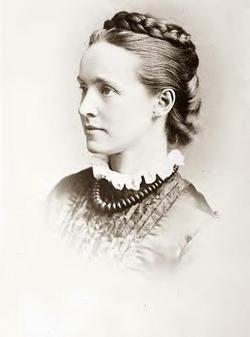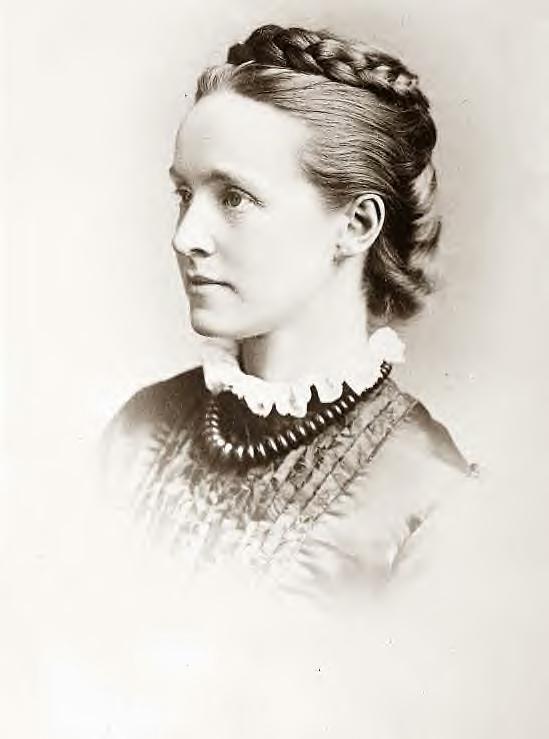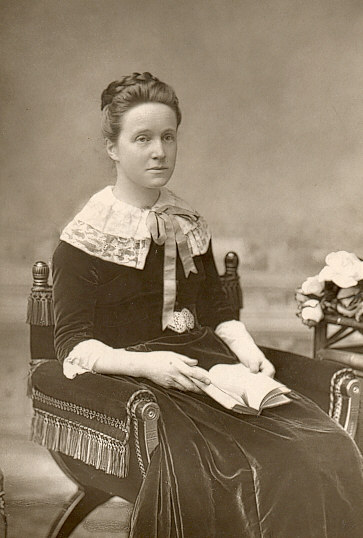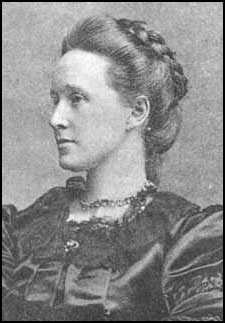Millicent was the younger sister of Elizabeth Garrett (Britain's first licenced female doctor) and wife of Henry Fawcett. She was actively involved in politics and Women's Suffrage movement (she was elected as president of the not-so-militant National Union of Women's Suffrage Societies in 1890, a post which she kept until 1914). Reasonably well-educated for the time, Millicent Fawcett also served the crucial role of secretary for her blind husband. Her most famous work is her 1870 Political Economy for Beginners, a brief but wildly successful book. It set a contemporary record as a principles textbook for students: it ran through ten editions in 41 years. The success of her book was even more extraordinary given that it presented economic theory in a thoroughly Ricardian vein, then waning in Great Britain in the wake of the Marginalist Revolution. Even more strikingly, Millicent Fawcett kept the Classical wages-fund doctrine in the late editions of the text, despite being aware of its problems. She went on to write a handful of more items on economic topics, culminating in a notable book with Henry Fawcett (1872). A vigorous promoter of education for women, she helped set up Newnham College for women at Cambridge. After Fawcett's early death, she became more involved in political activities (e.g. she was appointed during the Boer War in 1901 to inquire into conditions in British concentration camps) and spent less time writing on economic subjects. She was knighted ("damed") in 1925.
Millicent died in London and was cremated at Golders Green.
The memorial to Millicent and Henry Fawcett, consisting of bronze wreathed roundels on either side of Henry's, was added in 1932 and is by Sir Herbert Baker. Her inscription reads: "Dame Millicent Garratt Fawcett 1847-1929. A wise constant and courageous Englishwoman. She won citizenship for Women".
The insignia within the roundels represent the National Union of Women's Social Services and the Order of the British Empire. There are also small relief portraits of Henry and Millicent.
In 2018 she became the first woman to be commemorated with a statue in Parliament Square. An image of the statue and more images of Millicent can be seen on The Long Shop Museum website. Under the 'Themes and Stories' tab is a page about 'The Garretts'. This then leads to another page dedicated to Elizabeth and Millicent.
Millicent was the younger sister of Elizabeth Garrett (Britain's first licenced female doctor) and wife of Henry Fawcett. She was actively involved in politics and Women's Suffrage movement (she was elected as president of the not-so-militant National Union of Women's Suffrage Societies in 1890, a post which she kept until 1914). Reasonably well-educated for the time, Millicent Fawcett also served the crucial role of secretary for her blind husband. Her most famous work is her 1870 Political Economy for Beginners, a brief but wildly successful book. It set a contemporary record as a principles textbook for students: it ran through ten editions in 41 years. The success of her book was even more extraordinary given that it presented economic theory in a thoroughly Ricardian vein, then waning in Great Britain in the wake of the Marginalist Revolution. Even more strikingly, Millicent Fawcett kept the Classical wages-fund doctrine in the late editions of the text, despite being aware of its problems. She went on to write a handful of more items on economic topics, culminating in a notable book with Henry Fawcett (1872). A vigorous promoter of education for women, she helped set up Newnham College for women at Cambridge. After Fawcett's early death, she became more involved in political activities (e.g. she was appointed during the Boer War in 1901 to inquire into conditions in British concentration camps) and spent less time writing on economic subjects. She was knighted ("damed") in 1925.
Millicent died in London and was cremated at Golders Green.
The memorial to Millicent and Henry Fawcett, consisting of bronze wreathed roundels on either side of Henry's, was added in 1932 and is by Sir Herbert Baker. Her inscription reads: "Dame Millicent Garratt Fawcett 1847-1929. A wise constant and courageous Englishwoman. She won citizenship for Women".
The insignia within the roundels represent the National Union of Women's Social Services and the Order of the British Empire. There are also small relief portraits of Henry and Millicent.
In 2018 she became the first woman to be commemorated with a statue in Parliament Square. An image of the statue and more images of Millicent can be seen on The Long Shop Museum website. Under the 'Themes and Stories' tab is a page about 'The Garretts'. This then leads to another page dedicated to Elizabeth and Millicent.
Family Members
Sponsored by Ancestry
Advertisement
Records on Ancestry
Advertisement













